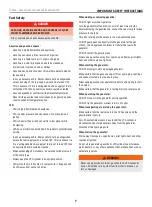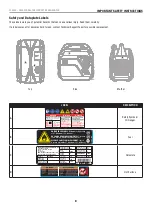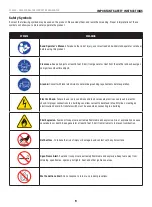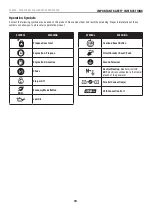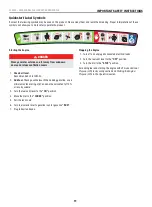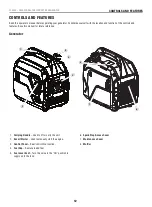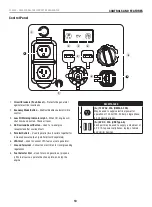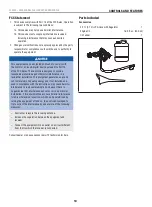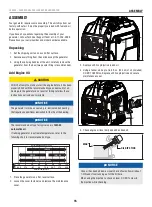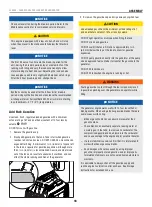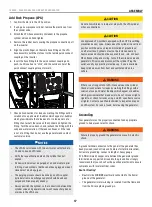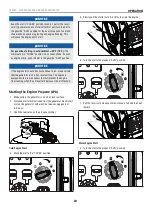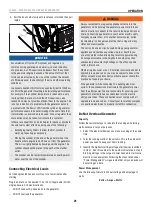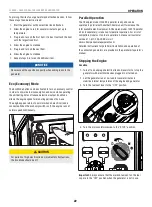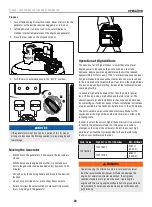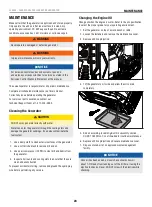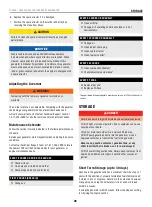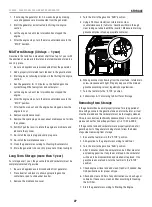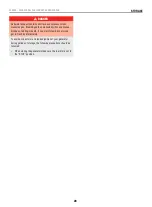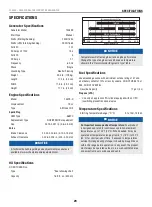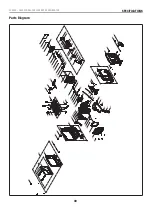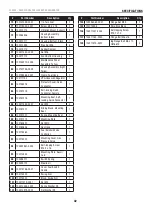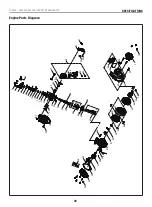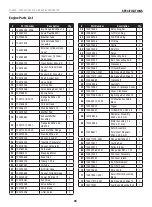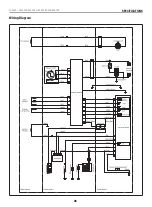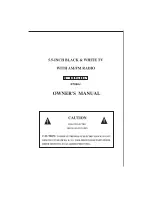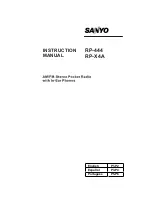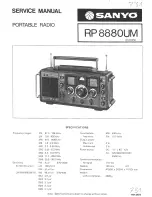
100899 - 2500W DUAL FUEL INvERTER GENERATOR
OPERATION
21
5. Pull the recoil cord slowly until resistance is felt and then pull
rapidly.
NOTICE
Accumulation of frost on LPG cylinder and regulators is
common during operation and normally is not an indication
of a problem. As LPG vaporizes and travels from the cylinder
to the generator engine it expands. The amount of frost that
forms can be affected by the size of the cylinder, the amount
of LPG being used, the humidity of the air and other operating
conditions.
In unusual situations this frost may eventually restrict the flow
of LPG to the generator resulting in deteriorating performance.
For example, if the cylinder temperature is reduced to a very
low level then the rate at which the LPG vaporizes is also
reduced and may not provide sufficient flow to the engine. This
is not an indication of a problem with the generator but only
a problem with the flow of LPG from the cylinder. If generator
performance seems to be deteriorating at the same time that
ice formation is observed on tank valve, hose or regulator then
some actions may be taken to eliminate this symptom.
In these rare situations it can be helpful to reduce or eliminate
the cold fuel system effects by doing one of the following:
–
Exchanging fuel cylinders to allow the first cylinder to
warm up, repeating as necessary.
–
Placing the cylinder at the end of the generator near the
handle, where engine fan air flows out from the generator.
This air is slightly heated by flowing over the engine. The
cylinder should not be placed in the path of the muffler
outlet.
–
The cylinder can be temporarily warmed by pouring warm
water over the top of the cylinder.
Connecting Electrical Loads
Let the engine stabilize and warm up for a few minutes after
starting.
Plug in and turn on the desired 120 or 240 (if applicable) Volt AC
single phase, 60 Hz electrical loads.
–
DO NOT connect 3-phase loads to the generator.
–
DO NOT overload the generator.
WARNING
Always remember to plug your appliances directly into the
generator and do not plug the generator power cord into any
electrical outlet or connect to the circuit breaker panel in your
home. Connecting a generator to your home’s electric utility
company’s power lines, or to another power source, called
‘backfeeding’ is a dangerous practice that is illegal in many
states and municipalities.
This action if done incorrectly could damage your generator,
appliances and could cause serious injury or death to you
or a utility worker when attempting to restore power during
an outage occurrence in the neighborhood who may then
unexpectedly encounter high voltage on the utility line and
suffer a fatal shock.
Whether injuries occur or not, if installed incorrectly and not to
applicable laws and codes, you may be subject to fines or the
utility company may disconnect your home power should this
practice be found in your home.
If the generator will be connected to a building electrical
system, those connections must isolate the generator power
from the utility power. You are responsible for ensuring your
generator’s electricity does not backfeed into the electric
utility power lines. These connections must comply with all
applicable laws and codes – Consult your local utility company
or a qualified electrician to properly install this connection.
Do Not Overload Generator
Capacity
Follow these simple steps to calculate the running and starting
watts necessary for your purposes:
1. Select the electrical devices you plan on running at the same
time.
2. Total the running watts of these items. This is the amount of
power you need to keep your items running.
3. Identify the highest starting wattage of all devices identified
in step 1. Add this number to the number calculated in step 2.
Starting wattage is the surge of power needed to start some
electric driven equipment. Following the steps listed under
“Power Management” will guarantee that only one device will
be starting at a time.
Power Management
Use the following formula to convert voltage and amperage to
watts:
Volts × Amps = Watts

